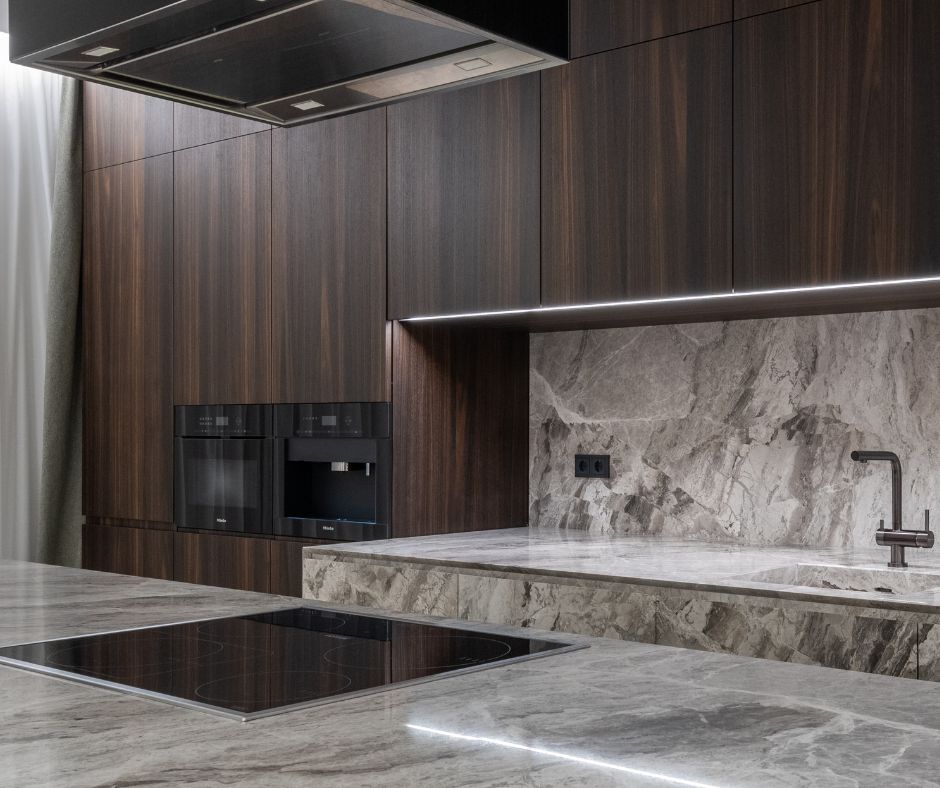Innovative kitchens are at the forefront of redefining culinary traditions and experiences. Although induction cooking technology might appear to be a contemporary innovation, its roots extend back to the early 20th century. The pioneering demonstrations in the 1930s amazed audiences with their extraordinary capacity to boil water using magnetic energy without any visible heat source. However, it is only in recent decades that, driven by remarkable advancements in technology, efficiency, and design, induction cooktops have firmly established themselves as indispensable features in modern kitchens.
In today's culinary landscape, an ever-increasing number of home chefs and passionate culinary enthusiasts are gravitating towards induction cooking for its captivating blend of sleek aesthetics, exceptional precision, and unmatched energy efficiency. This innovative cooking method not only accelerates meal preparation but also transforms the very essence of home cooking, seamlessly merging the science of heat management with culinary creativity. The right induction cooktop can rival the speed of a microwave, ensuring that delicious family meals come together effortlessly!
Enhancing Flavour and Nutritional Value with Precision Cooking Techniques
Unlike traditional gas or electric ranges, induction cooktops directly heat cookware through the application of electromagnetic energy. This cutting-edge approach effectively negates wasted heat, prevents the formation of burnt edges, and affords superior control over both low and high temperature settings. With the ability to manage heat with such accuracy, your ingredients retain a higher degree of their natural moisture, flavour, and nutritional integrity. Whether you are flash-searing proteins, gently simmering sauces, or swiftly blanching vegetables, induction cooking allows for the achievement of flawless results with ease, thereby avoiding the pitfalls of overcooked meals and nutrient loss.
Chic Induction Cooktops: Optimising Space and Reducing Kitchen Stress
In kitchens where every square inch is at a premium, induction cooktops shine not only in their performance but also in their visual appeal. Their flat, smooth surfaces blend seamlessly into your countertop, delivering a minimalist aesthetic that enhances additional space for food preparation, plating, or even enjoying casual dining experiences.
Unlike conventional gas hobs that demand bulky grates and protruding burners, induction cooktops sit flush against the countertop. While ceramic stovetops may boast a sleek appearance, they tend to retain dangerous heat long after cooking has concluded.
In contrast, induction surfaces cool down rapidly once the cookware is removed. The heat is generated through the magnetic interaction between the cooktop and the cookware, rather than the cooktop itself, resulting in the glass surface retaining significantly less heat. This characteristic not only makes cleaning safer and easier but also fosters a more secure cooking environment, particularly beneficial for households with children or pets who may be inquisitive about kitchen counters.
The result? A cooler kitchen with cleaner lines and enhanced flexibility—perfect for modern cooks who value both aesthetics and functionality.

Comprehensive Guide to Choosing the Right Cookware for Induction Cooking
Transitioning to induction cooking may come with the bittersweet revelation that you might need to part with some beloved old pans. Since induction technology relies on magnetic energy for heat generation, not all pots and pans are suitable for this method.
For cookware to function effectively on an induction cooktop, it must be constructed from ferrous (magnetic) metals, such as cast iron, carbon steel, or magnetic-grade stainless steel. A straightforward fridge magnet test can determine compatibility: simply place a magnet on the base of the pan. If it adheres firmly, you’re set to go.
When shopping for new cookware, choose pans with a heavy, flat base. This design guarantees optimal contact with the cooktop, ensuring even heat distribution, which is vital for achieving perfect browning, tender roasts, and crispy edges. Moreover, high-quality induction cookware is engineered to resist warping over time, maintaining consistent cooking performance for every meal.
Although it may be difficult to let go of your old favourites, consider it an upgrade. In return, you will gain enhanced control, quicker cooking times, and dishes that exhibit richer flavours and textures.
Induction Cookware Essentials Checklist: Key Items for Culinary Success
 Conduct a fridge magnet test—strong adhesion indicates induction compatibility
Conduct a fridge magnet test—strong adhesion indicates induction compatibility Opt for flat-bottom pans for optimal contact and heat distribution
Opt for flat-bottom pans for optimal contact and heat distribution Choose cast iron, carbon steel, or magnetic stainless steel cookware
Choose cast iron, carbon steel, or magnetic stainless steel cookware Avoid cookware made solely of copper, aluminium, or glass unless expressly marked for induction
Avoid cookware made solely of copper, aluminium, or glass unless expressly marked for induction Look for the induction symbol (resembling a horizontal coil or a series of loops) stamped on the base or packaging
Look for the induction symbol (resembling a horizontal coil or a series of loops) stamped on the base or packaging
Pro Tip: The induction symbol typically resembles a zigzag or spring coil graphic. Spotting it guarantees cookware compatibility.
Crucial Installation Considerations for Your Induction Cooktop
Before embarking on your culinary adventure with your new cooktop, it is vital to prioritise several installation essentials:
-
Professional Installation Is Indispensable: Induction units frequently necessitate dedicated electrical circuits and specific clearances. Ensure you engage professionals who comprehend these requirements.
-
Hire a Licensed Electrician: Wiring a high-powered induction cooktop is not a task for amateurs.
Discover why enlisting a qualified electrician is essential. -
Confirm Your Power Setup: Certain induction models demand substantial power consumption. Before making a purchase, verify that your wiring meets the cooktop’s specifications.
Proper installation not only guarantees optimal performance but also ensures safety and longevity.
Essential Insights About Induction Cooking
Induction cooking offers more than just speed or safety—it embodies an intelligent cooking solution. With the right cookware and a professionally installed system, you can consistently achieve meals that are more flavourful, richer in texture, and healthier, meal after meal. In contemporary kitchens, precision cooking has evolved from being a desirable feature to becoming the new standard.
Frequently Asked Questions Regarding Induction Cooktops
1. What Advantages Do Induction Cooktops Have Over Gas or Electric Options?
Induction cooktops deliver instant heat control, enhanced energy efficiency, and improved safety features. Since they heat the cookware directly, meals cook more quickly with reduced energy waste, whilst the surfaces remain cooler, thereby minimising the risk of burns.
2. Can I Utilise My Existing Pots and Pans on an Induction Cooktop?
Only if they are magnetic. Cookware made of cast iron or magnetic stainless steel is ideal. You can easily check compatibility by placing a magnet on the base—if it adheres firmly, it is suitable for induction use.
3. Does Induction Cooking Affect the Flavour of Food?
Yes, and positively. Because induction cooking provides precise temperature control, you have the ability to sear, sauté, or simmer without overheating, thereby preserving the natural flavours, textures, and nutrients far more efficiently than inconsistent gas or electric heat sources.
4. Is Special Wiring Necessary for an Induction Cooktop?
Most induction cooktops require a dedicated electrical circuit along with specific voltage and amperage configurations. It is essential to have a professional electrician assess and install your wiring to ensure compliance with safety regulations and guarantee optimal performance.
The post The Secret Ingredient in Modern Kitchens: Induction Cooktops Are Changing the Game appeared first on https://cookinggods.com
The Article Induction Cooktops: The Game-Changer in Modern Kitchens Was Found On https://limitsofstrategy.com

